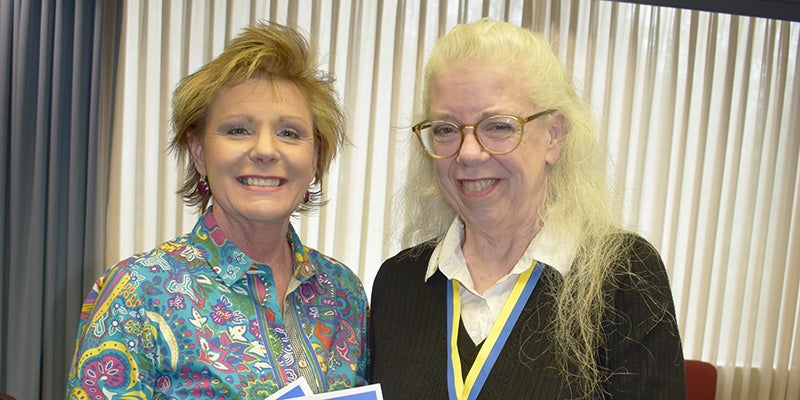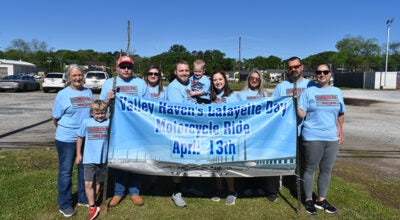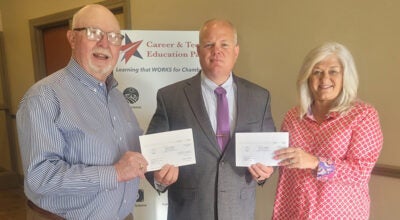The history of Rotary and its impact in the community
Published 8:30 am Wednesday, March 15, 2023
|
Getting your Trinity Audio player ready...
|
WEST POINT — At last Thursday’s meeting, the West Point Rotary Club was privileged to have as its guest speaker one of the most knowledgeable people about Rotary in Georgia. Margie Kersey of Lawrenceville has served as both governor and division chair over the past decade.
Club President Julie Ambrose introduced her as someone “who is a Rotarian through and through.”
Kersey talked about what it means to be a Paul Harris Fellow and a member of the Arch Klumph Society. She also encouraged the West Point club to be more active in seeking grants for local projects. Elinor Crowder sought the last one for the club in 2018. A $1,500 grant was approved to assist the Chambers County Project Lifesaver program.
Project Lifesaver is the premier search and rescue program operated internationally by public safety agencies and is strategically designed for at-risk individuals who are prone to the potentially life-threatening behavior of wandering.
A Paul Harris Fellow is a Rotarian who has contributed, or has had contributions made in their name, of $1,000 or more to the Rotary Foundation.
Paul Harris (1868-1947) was born in Wisconsin, was trained in the law and moved to Chicago as a young attorney.
“He grew up in a small town where everybody knew everybody else’s business,” Kersey said. “He lost those small town kinds of relationships in the big city. He became lonely because he missed the kinds of conversations he had always had in his hometown. He decided to do something about that by forming a lunch club. He invited professional people to meet once a week at a designated place, and they would talk about ways they could be of help to the community.”
Kersey said that young Harris was convinced that there must be other young professionals like himself in the big city of Chicago who would like to come together in a spirit of fellowship to help their fellow man and the community at large.
The first Rotary Club meeting took place in the downtown Chicago office of Gustavus Loehr on Feb. 23, 1905. Two years later, Paul Harris was elected president of the club. By 1910, Rotary began expanding to other cities.
What started out as a few men having once-a-week luncheon meetings in downtown Chicago has since grown into an international organization with an estimated 1.4 million members who are putting in a combined total of 47 million volunteer hours each year and annually awarding more than $330 million in global service initiatives.
And what was Rotary’s first project? They installed a comfort station in downtown Chicago. People didn’t have to find a back alley anymore to do business. Their next project was to buy a horse for a local doctor. He didn’t have to make house calls by foot anymore.
Such projects, Kersey said, illustrated how important it was for clubs to take on these tasks.
“It binded them together,” she said. “They called it Rotary because the meetings switched from place to place.”
The Rotary Foundation began with a contribution of $26.50. It’s grown a whole lot since then.
It’s now a 501(c)3 nonprofit, and all the money that goes into the foundation stays there until written requests are made by Rotary members for service projects.
“All a Rotary Club member has to do is to apply for a service grant,” Kersey said. “I suspect there is something in this community that is in need of such a grant. In LaGrange, there’s an annual grant for pre-K books. Find out what your community needs the most and apply for a grant. Rotary Clubs work together to distribute these grants.”
If you don’t apply for a grant,” Kersey said, “you are leaving $1,200 to $1,500 on the table. This is money that could be addressing needs in your community, and it will be going someplace else if you don’t apply.”
Named after the organization’s sixth president, the Arch Klumph Society recognizes the top tier of Rotary donors, the ones who have contributed $250,000 or more during their lifetimes. AKS members have the opportunity to have their name, portrait and biographical information displayed at the Rotary International headquarters.




